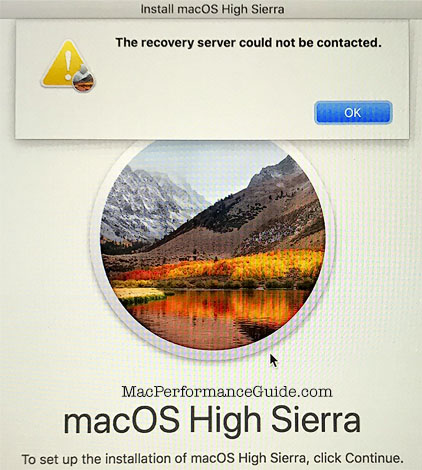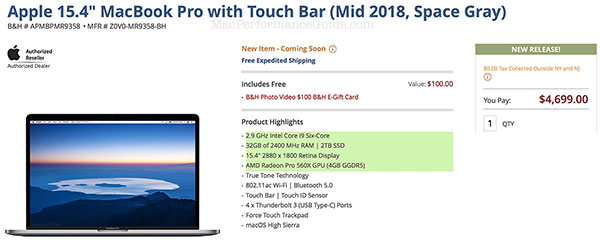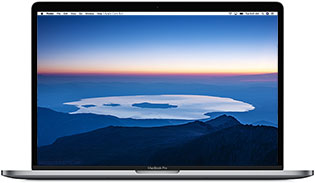Testing in Progress on Apple 2018 MacBook Pro 15-inch 2.9 GHz 32GB 2TB Radeon Pro 560X
Thanks to B&H Photo for making this top-line Apple MacBook Pro available for testing. As this was written B&H Photo was offering it at a $100 discount( $100 e-gift card).
Update: I’m dead in the water for a few hours at least... It turns out that although the 2018 MacBook Pro can be booted off an external Thunderbolt 3 NVMe SSD, it doesn't survive long (it’s unclear if the issues are specific to any particular Thunderbolt 3 SSD). So far I’ve had five twelve system lockups. The MBP will boot off the Thunderbolt 3 SSD, but will lock up within 5 minutes.

Update 2: I now have a $5000 paperweight sitting on my desk: it won't boot off the SSD, and “Recovery server cannot be contacted.” is what I get trying to do a system reinstall.
Update 3: I've got the MacBook Pro booting. I even copied 300GB of files over to the internal. But Carbon Copy Cloner always crashes the machine so hard that only a hard power off and reboot will bring it back. Maybe it’s a bug in CCC, and maybe it has nothing to do with CCC, I don’t know.
Update 4: SuperDubler had no trouble completing the clone, so at this point signs point to a bug in Carbon Copy Cloner. Of course, it could be a macOS bug triggered by CCC, rather than a bug in CC itself.
Update 5: the very next morning, Apple issues yet another supplemental update for the 2018 MacBook Pro. Maybe it fixes some problem that wasted an entire day for me—not the fist time Apple has done this. Unless macOS is so incompetent that all day long yesterday it could not find the update? Seems to me that Apple’s new motto ought to be “Ship First, Fix Later”.
...
I’ve started testing the 2018 MacBook Pro. It is fast, for sure, but so far it is much slower on my most important task than my trusty 2017 iMac 5K, so don’t believe all the hype out there! Wait for my review coverage.
I was going to test both laptops with APFS, so I updated my 2015 MacBook Pro to macOS High Sierra. Big mistake—I immediately noticed that things formerly snappy that involved I/O and that some things were 10 to 100 times slower now, with APFS. I had observed such issues early this year, which is why I am still using macOS Extended on my 2017 iMac 5K.
I don’t know how Apple can be proud of foisting such awful performance on users after selling them a $5000 machine. The SSD may be fast (it is!) but the file system has serious performance issues for some use cases. MacOS Mojave reportedly will require APFS. I won’t be upgrading to Mojave unless I must, such as with a new Mac.
Don’t get me started on the 2-3 hours wasted because Apple destroys my software (removes it!) and then removes the necessary link to fix it from the support page (broken for ~2 months now magically fixed today by coincidence). Or how I get prompted repeatedly (100 times is 99 times too many) to sign into various Apple services that I do not want—the unfettered arrogance of the state of macOS is appalling. Fortunately I found a workaround for the first issue, and signing out of iCloud addresses a portion of the latter.
Given the extreme performance problems (deleting files, iterating the file system and similar), I’ve elected to unf*** matters by wiping out the 2018 and 2015 MacBook Pro SSDs, reinitializing them to macOS Extended, and then all 3 machines will run macOS High Sierra with macOS Extended file system for a level playing field.

Pro machine?
For the first time ever, the MacBook Pro really looks like a pro machine, excepting possible CPU throttling when heat builds up. The key factors are the 6-core CPU, the 32GB memory option, P3 gamut display, and 4 Thunderbolt 3 ports. I wish I could pay to remove the touchbar, but we cannot have everything. Still, the iMac 5K remains a much better choice for me.
Negatives:
- The TrueTone display sounds like a disaster for those working with images where accurate color is needed. It will need to be turned off.
- The Apple T2 chip creates booting and recovery headaches just as with the iMac Pro. That said, encryption of the SSD without any speed penalty is something well worth having for a travel machine.
- The keyboard and touchbar irritated many pro users including me. These remain in improved form, but are of serious interest as maybe acceptable, and maybe not.
Recommended configurations below. Be sure that a 512GB SSSD is enough if you go with an SSD that small—it is not upgradeable since it is soldered onto the logic board (ditto for memory). My own photographic work demands nothing less than a 2TB SSD, so even 1TB is problematic. It can be an expensive mistake to buy too small an SSD (that is, to buy another MacBook Pro to fix the problem, a huge cost). The best alternative when running out of storage is the OWC Envoy Pro EX Thunderbolt 3 SSD.
Do not buy a MacBook Pro with only 8GB of memory unless it is only for casual use. The memory is soldered on, and 8GB is nowhere near enough for many tasks. It is sufficient for email and web and so on—casual simple uses.
While a 13-inch display is too small for my taste, the smaller size may appeal to some.


 diglloydTools™
diglloydTools™











